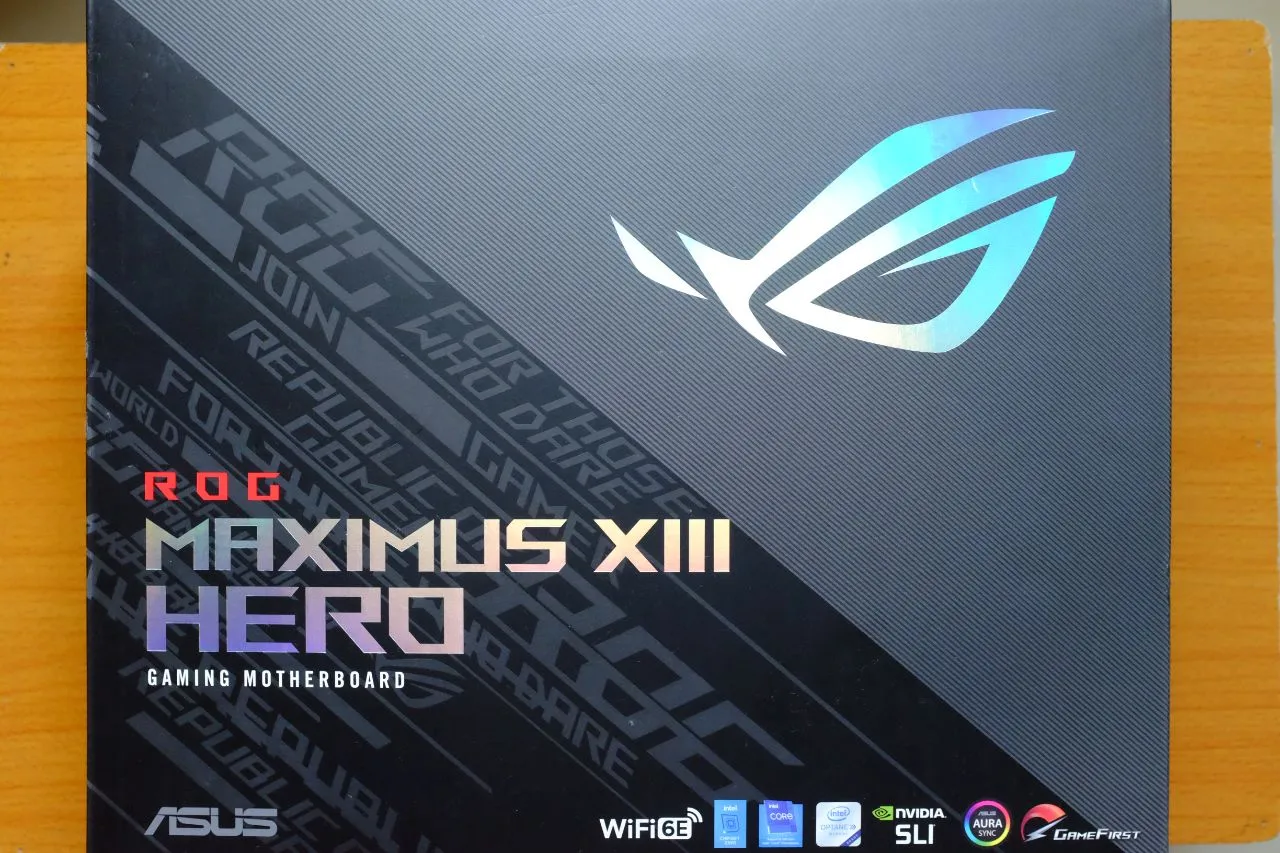
ASUS Maximus XIII Hero Motherboard Review: A Premium Z590 Offering
The ASUS Maximus series has long been synonymous with high-quality motherboards, pushing the boundaries of technology and achieving numerous overclocking world records. Following Intel’s launch of the Z590 chipset at CES 2021, ASUS promptly released its flagship Maximus XIII Hero. This review delves into the features and design of this premium motherboard.
 ASUS Maximus XIII Hero Motherboard
ASUS Maximus XIII Hero Motherboard
Design and Features: A Refined Approach
The ASUS Maximus XIII Hero targets high-end consumers. Its packaging reflects this, opting for a simpler, yet elegant design compared to the more flamboyant boxes of the Strix E-Gaming or TUF Gaming series. The large, reflective ROG logo adds a touch of sophistication. The rear of the box highlights key features in a clean and concise manner.
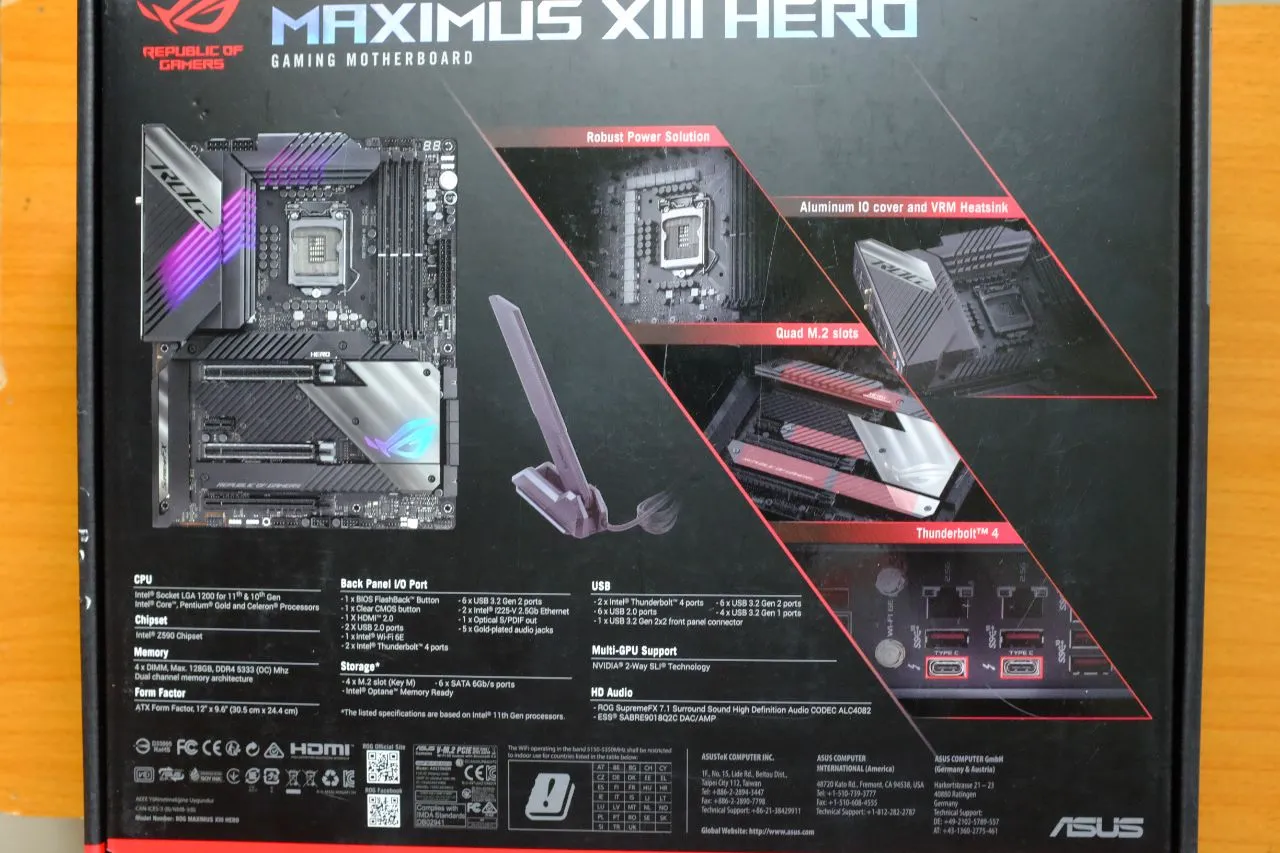 ASUS Maximus XIII Hero Rear Panel
ASUS Maximus XIII Hero Rear Panel
Unboxing the Maximus XIII Hero reveals a robust design, with protective armor covering a significant portion of the board. However, it appears more streamlined than its predecessor, the Maximus XII. The lower heatsink is divided into three separate sections, providing easier access to the four M.2 slots. This is a welcome improvement over the previous generation, which required removing the entire heatsink assembly.
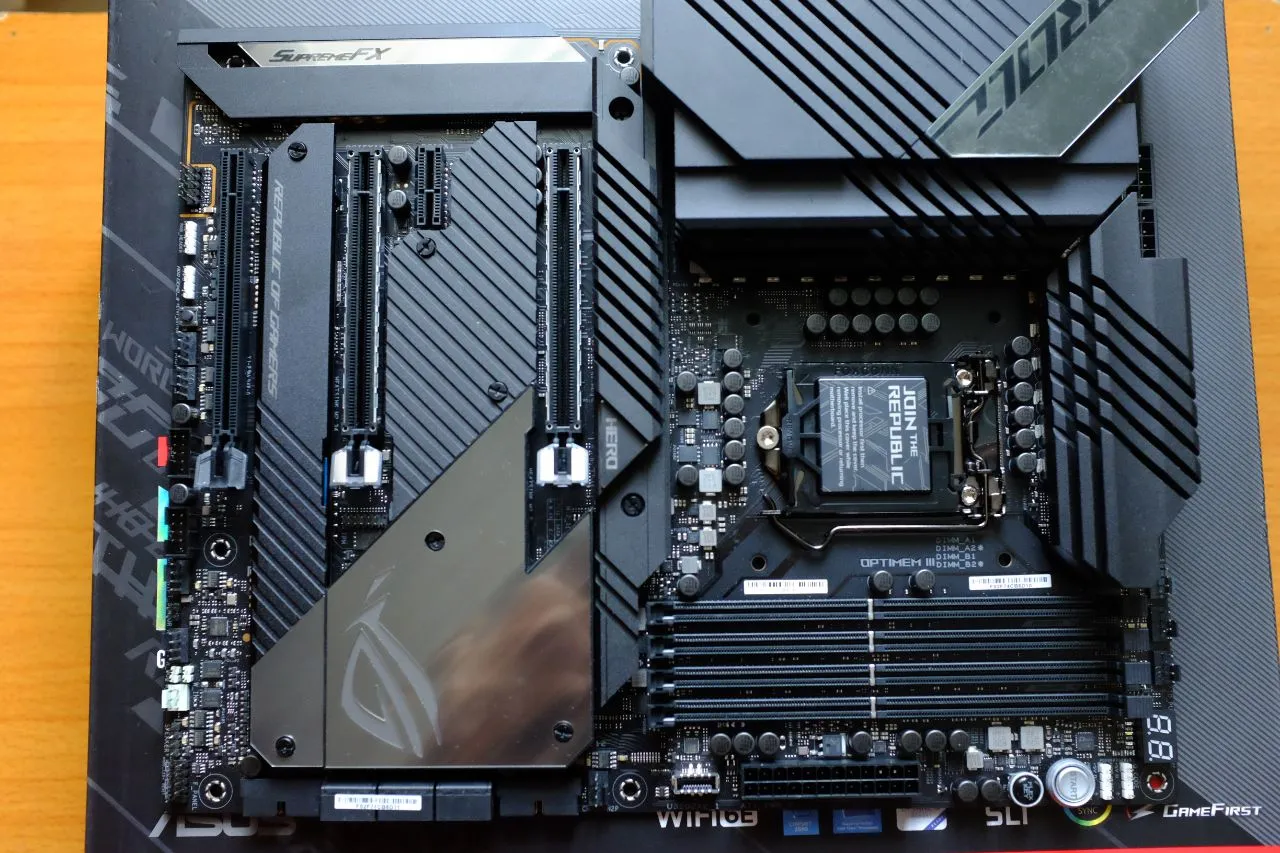 ASUS Maximus XIII Hero Heatsinks
ASUS Maximus XIII Hero Heatsinks
Both primary PCI-E slots are reinforced with steel for added durability, supporting heavy graphics cards without bending. These are true PCI-E 4.0 slots, leveraging the capabilities of Intel’s new CPUs. Furthermore, the retaining clips are also reinforced with metal, enhancing longevity.
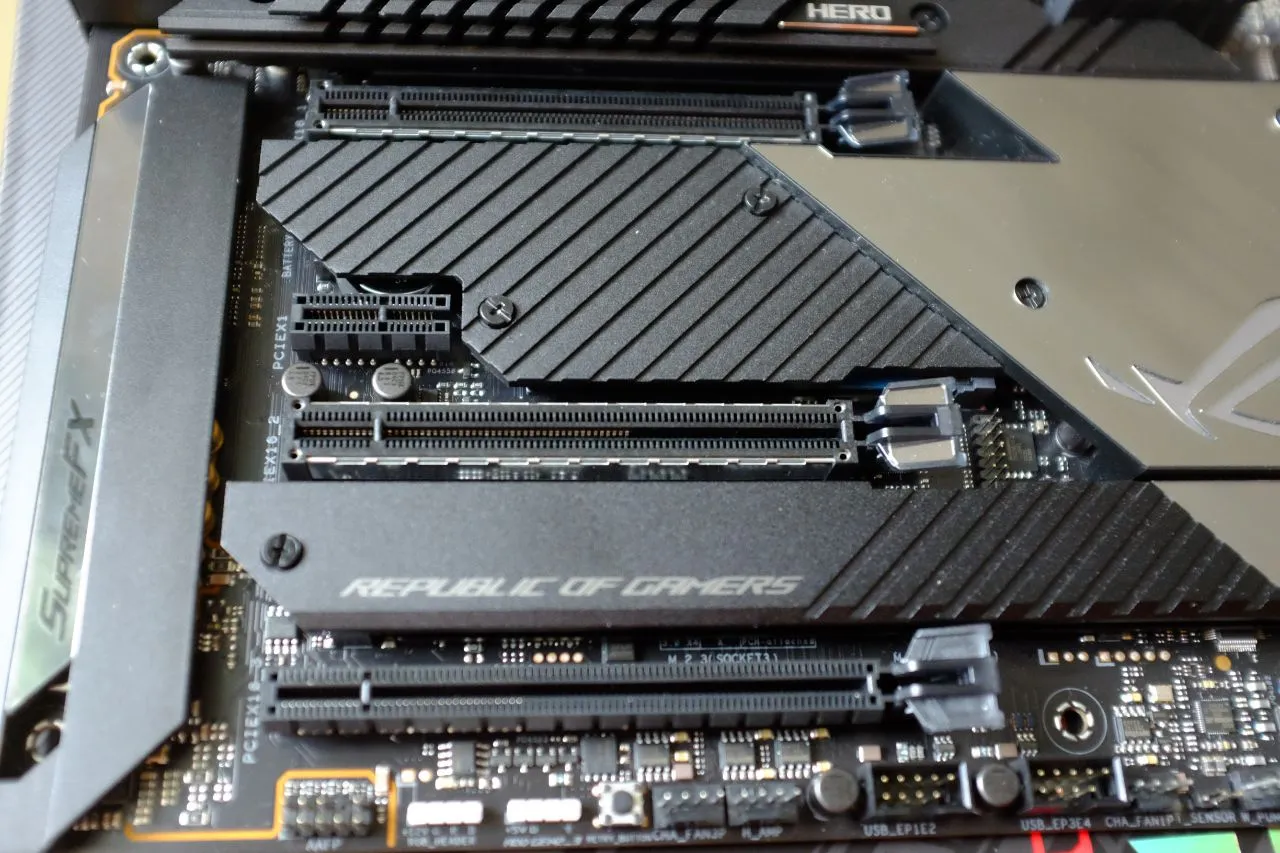 ASUS Maximus XIII Hero PCI-E Slots
ASUS Maximus XIII Hero PCI-E Slots
The CPU power delivery system retains a similar heatsink design to the Maximus XII, despite the increased power demands of the new Intel processors. ASUS seems confident in its cooling solution, likely reusing the design to reduce development costs. While the 14+2 power phase design remains, the phases are upgraded to 90A, significantly higher than the 60A of the previous generation, ensuring ample power for the latest CPUs.
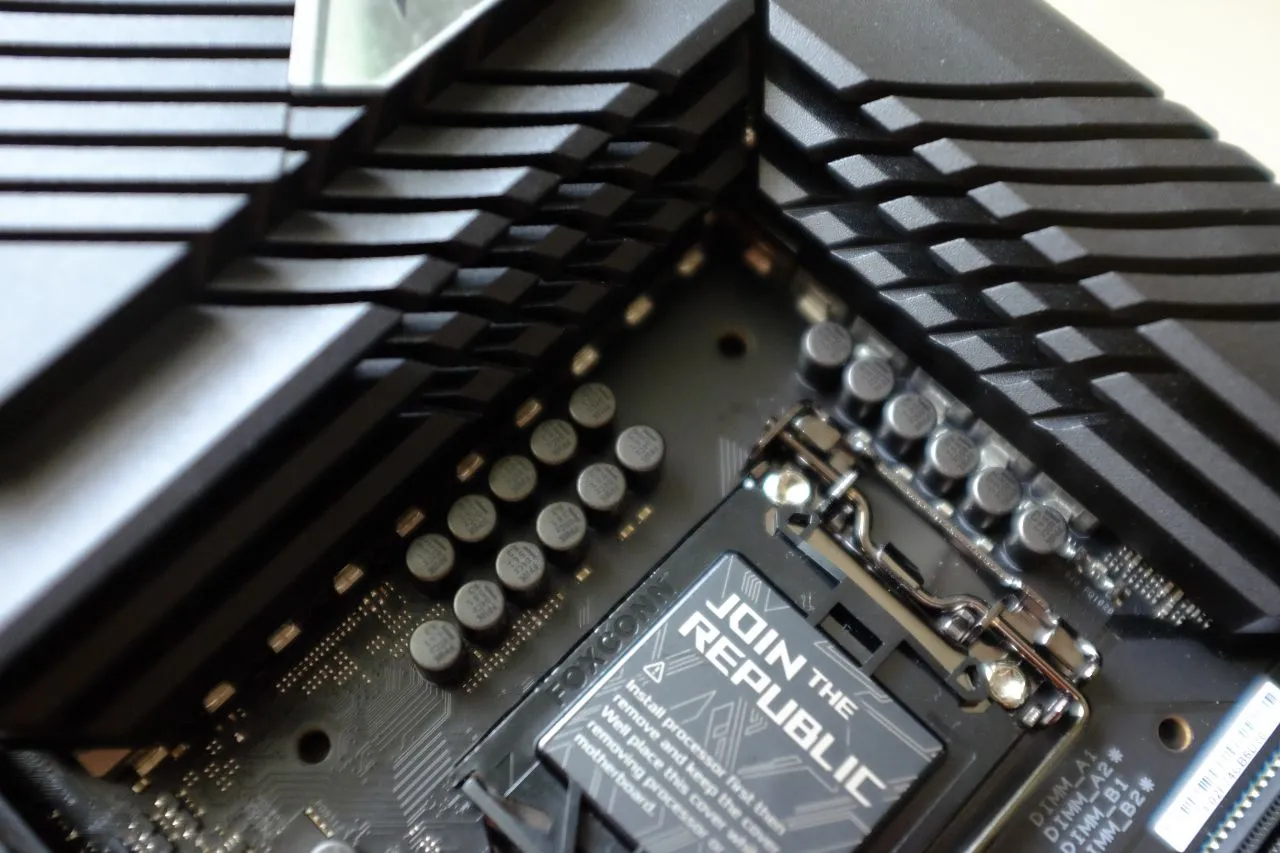 ASUS Maximus XIII Hero Metal Reinforced Clips
ASUS Maximus XIII Hero Metal Reinforced Clips
The I/O panel sees notable upgrades, featuring two 2.5Gbps LAN ports instead of one, alongside two high-speed Thunderbolt 4.0 ports. Wireless connectivity is also enhanced with Wi-Fi 6E and a redesigned foldable antenna for easier installation.
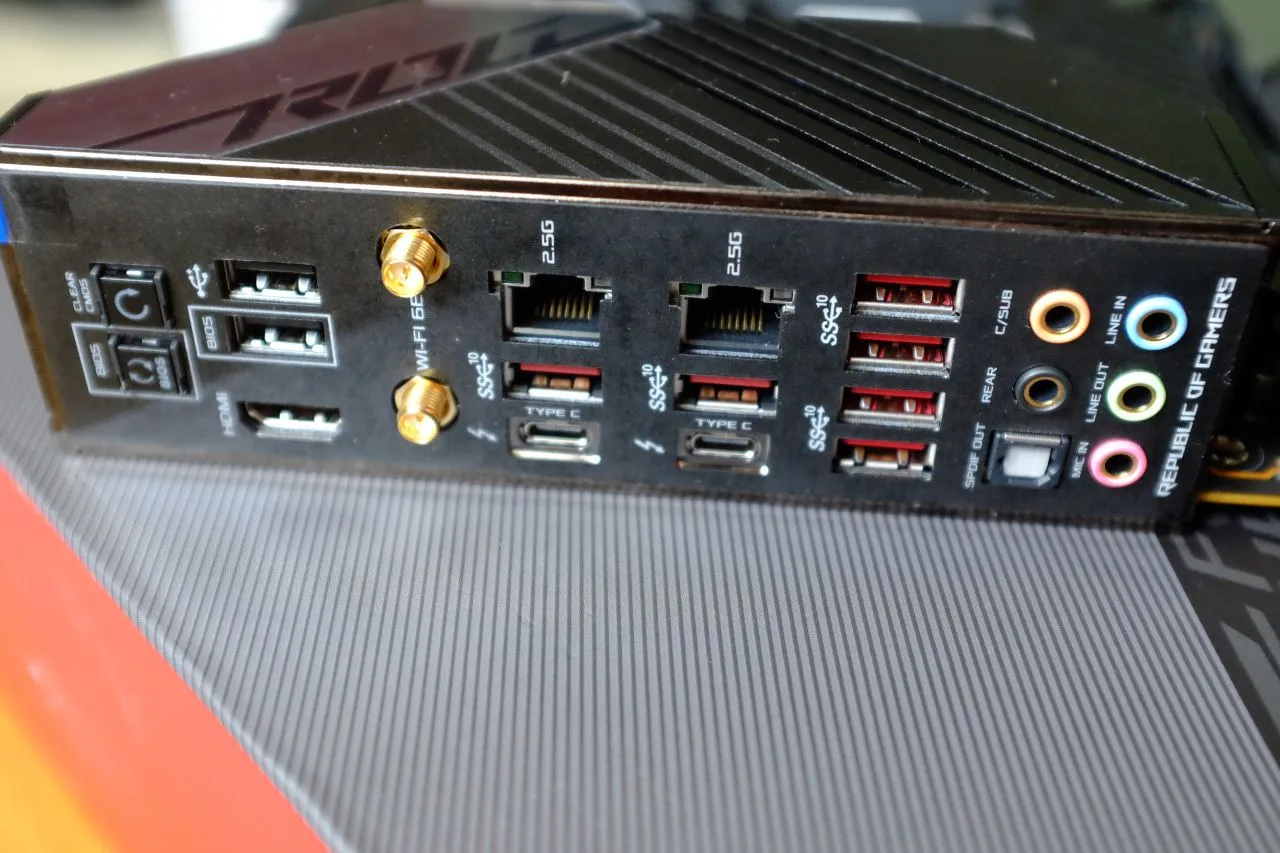 ASUS Maximus XIII Hero I/O Panel
ASUS Maximus XIII Hero I/O Panel
Other elements remain largely unchanged. The debug LED, onboard power and reset buttons, and steel-reinforced RAM slots (primarily aesthetic) are all present. ASUS avoids the trend of adding a backplate, likely due to the increased thickness and durability of modern PCBs.
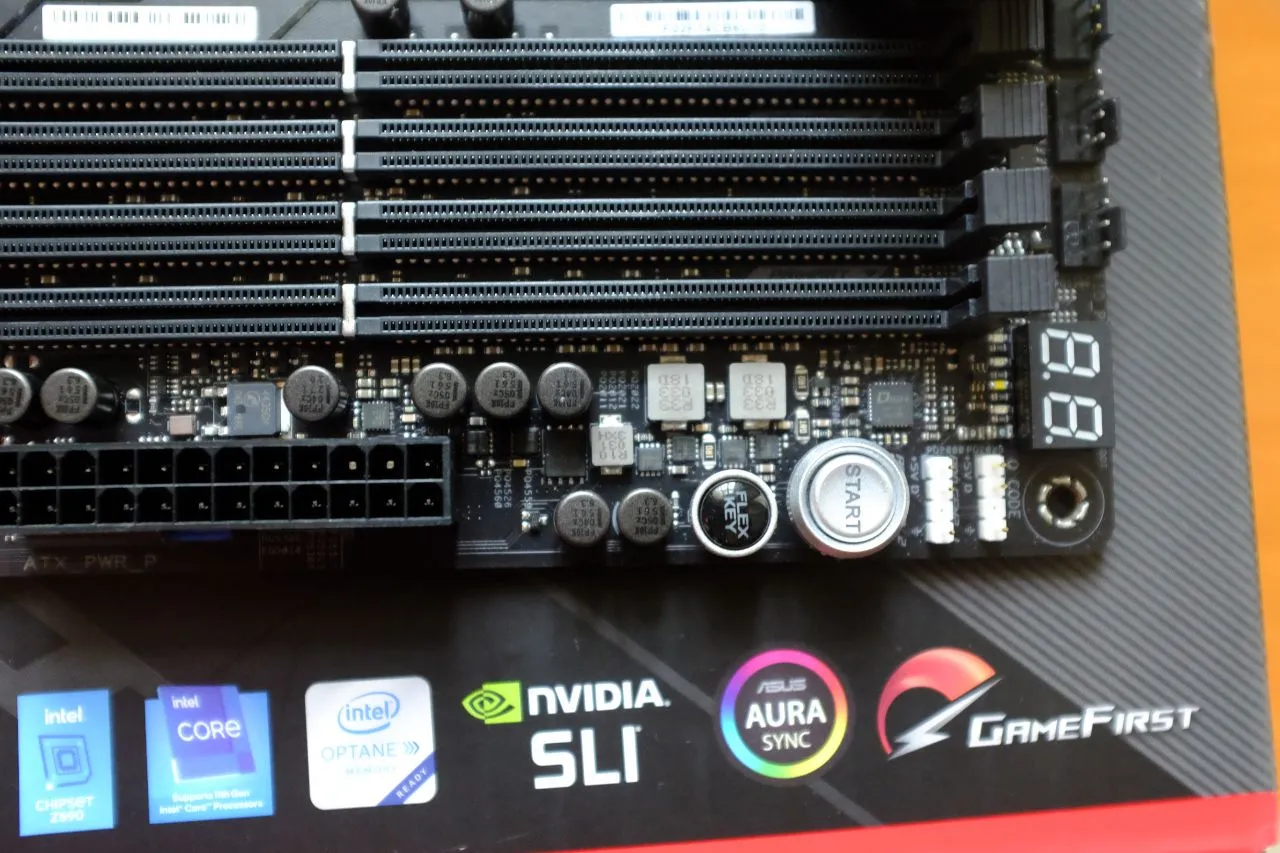 ASUS Maximus XIII Hero Wireless Antenna
ASUS Maximus XIII Hero Wireless Antenna
The audio section is isolated, featuring high-quality Nichicon audio capacitors and an ESS ES9018Q2C DAC, commonly found in dedicated audio players. These components are managed by the SupremeFX ALC4082 codec, promising immersive audio experiences for gamers.
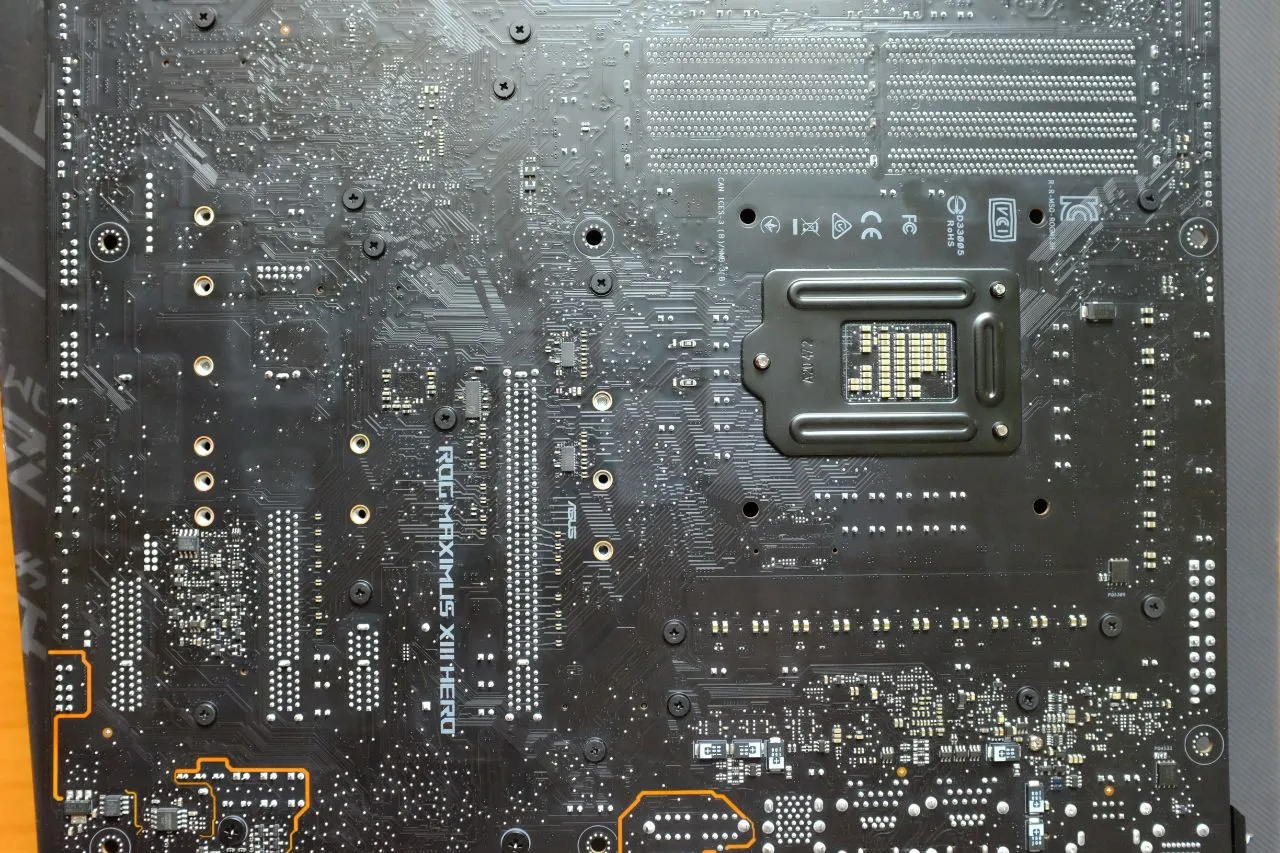 ASUS Maximus XIII Hero Onboard Buttons
ASUS Maximus XIII Hero Onboard Buttons
Conclusion: A Flagship Contender
The ASUS Maximus XIII Hero continues the legacy of the Maximus series, offering cutting-edge technology, premium components, and a top-tier design. It solidifies ASUS’s position at the forefront of the high-end PC market.





Comments (0)